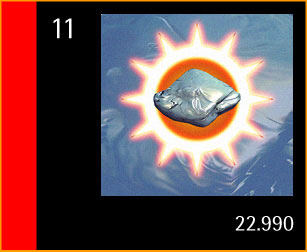|
|
|
|
|
|
|
|
|
|
|
|
|
|
 |
|
|
|
|
|
|
 |
|
|
|
Discovered : 1807 by Sir Humphry Davy in London, UK.
Origin : The name is derived from the English soda and the chemical symbol comes from the Latin 'natrium', which means the same.
Description :
A soft metal that tarnishes within minutes of being exposed to the air, and which reacts vigorously with water. The liquid metal is used as a heat exchanger in certain nuclear reactors, and as a reagent in the chemicals industry. Sodium salts such as common salt (sodium chloride) and sodium carbonate are more important than the metal itself. Sodium is an essential element for all living things, including humans, although controversy surrounds the amount that we require. The sodium that comes from our food provides all we need. The average person consumes about 10 grammes of salt a day although all that is needed is about 3 grammes. Any excess may contribute to high blood pressure. Our bodies contain about 100 grammes, and as this is continually being lost in various ways, it needs to be replaced. Sodium performs several functions within the body, such as the transmission of electrical impulses and the regulation of water content in tissue and blood.
Image :
Chip of sodium in paraffin - orange glow from street lighting. |
|
|
|
|
|
|
 |
|
|
|
|
 |
|
|
|
|
|
|
|
 |
|
|
|
|
|
|
|
|
|
 |
|
|
|
|
|
|
|
|
|
|
|
|
|
|
|
|
|
|
|
 |
|
|
|
|
|
 |
|
|